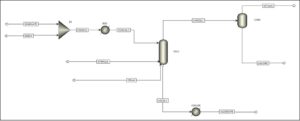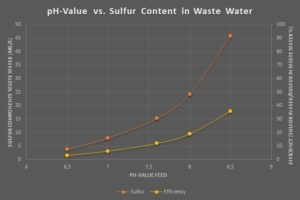Initial Situation
Wastewater treatment using stripper columns. The current system has reached its capacity limit concerning flow rate and thresholds.
The Task
Design a new column including an evaporator and a refeed system to increase the capacity by 30% taking into account the wastewater streams of additional plants.
Project Management
Modelling

- Adapting data of substances for the real system (chemical and physical properties).
- Conducting sensitivity analyses using different components in the column based on former laboratory and process data.
- Identifying the parameters that influence the performance of the system the most.

Insights
- pH-value of the induced wastewater shows significant impact on the threshold.
- Heavy fluctuations dependent on the chronological discharge of wastewater from different plants.
- Under ideal conditions (concerning pH-value) there are spare capacities in the existing system.
Design Proposal
- Expand the puffer tank in front of the column to equally distribute the feed.
- Install an acid metering to adjust the pH-value.
- Enlarge the column evaporator to allow for an increased capacity.
- The hydraulic system of the column is working on ideal terms even at an increased capacity of 30%.
- The refeed system (condenser, container, pump, valve) is suitable for an increased flow rate, if the pH-value is controlled.
